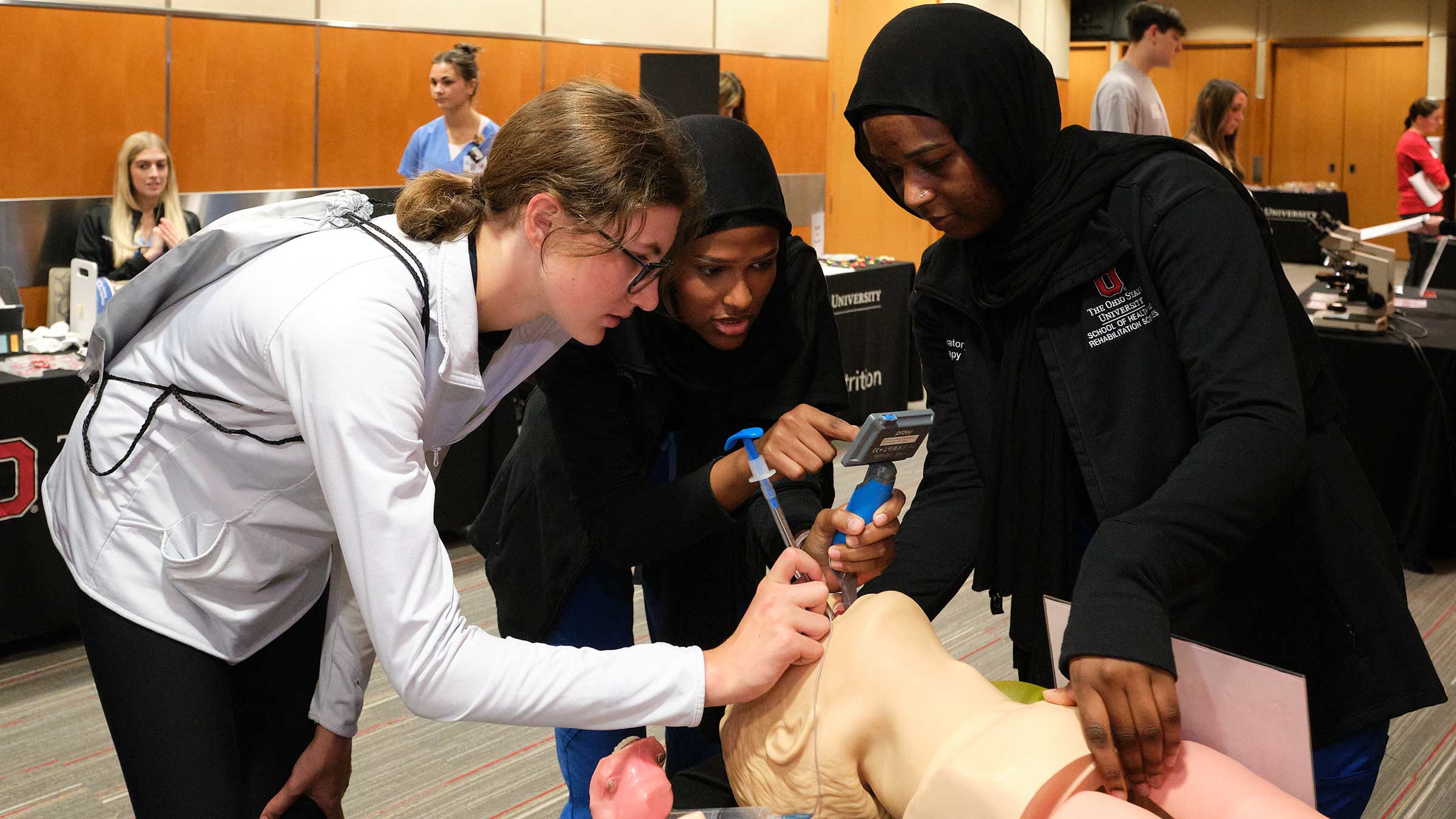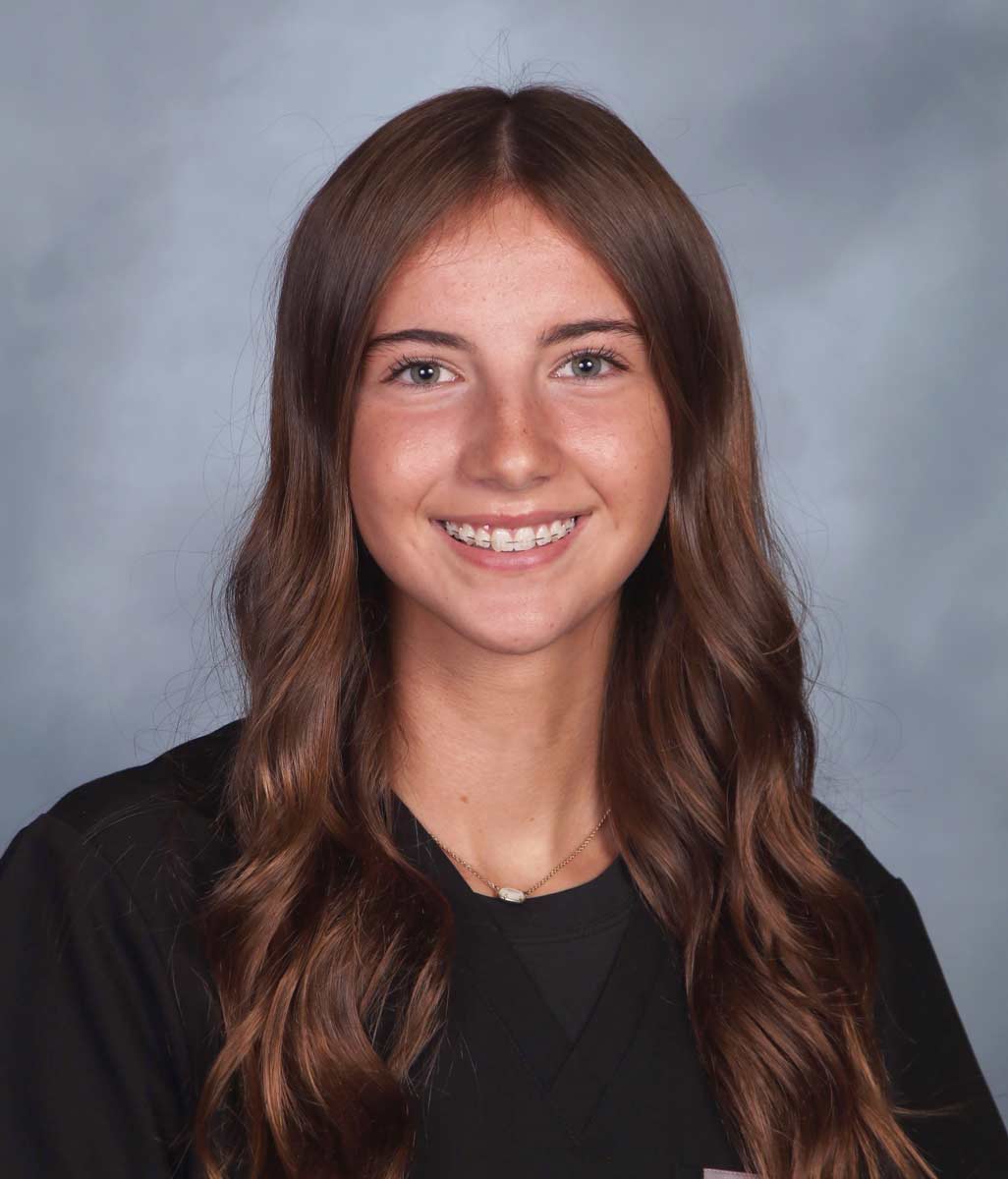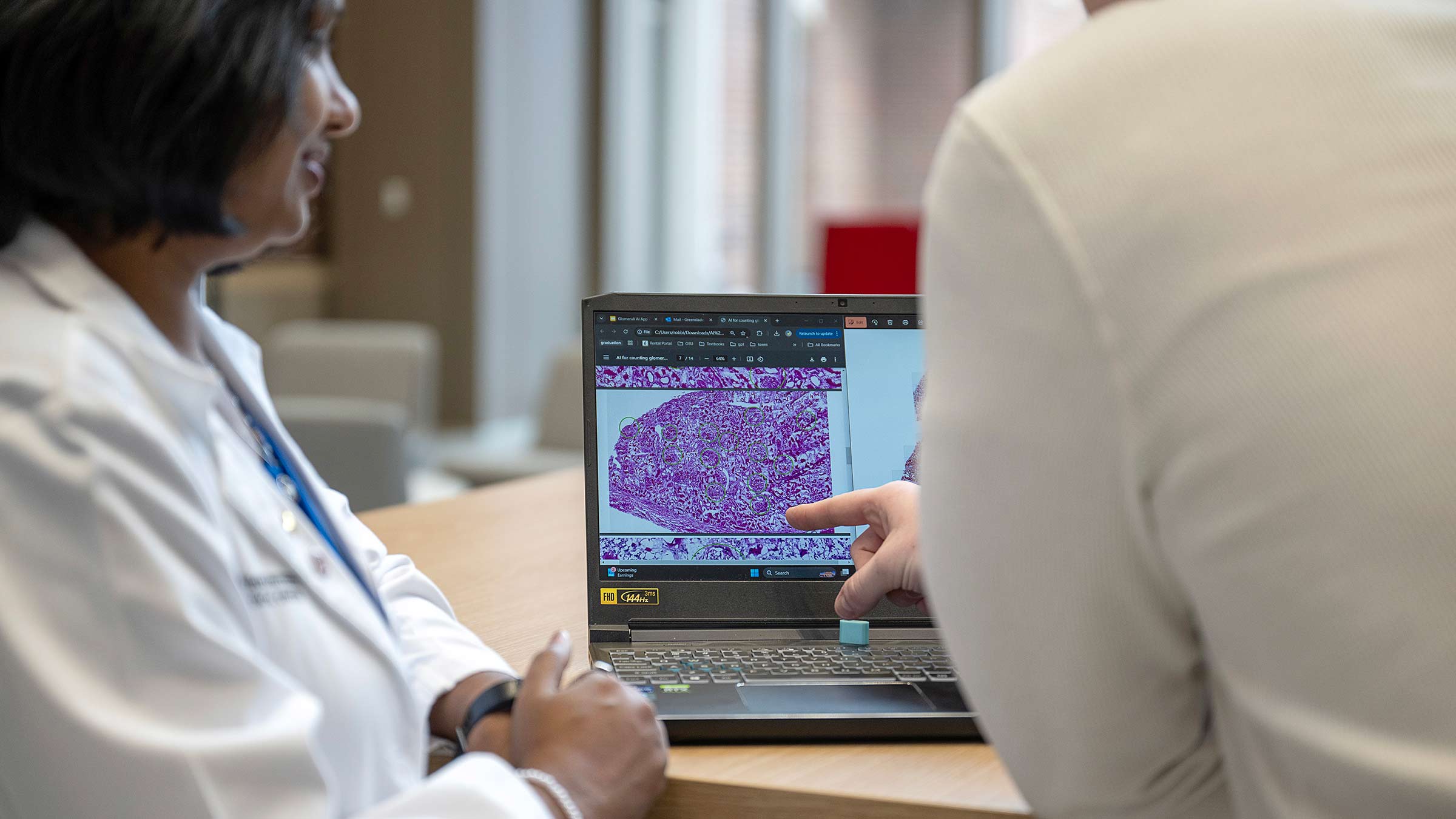
When you consider careers in health care, nurse and doctor might be the first ones you think of.
It’s easy to overlook the many other positions: managing electronic health records, analyzing blood samples, performing X-rays and treating breathing problems.
“We need good nurses. We need good doctors. But not everyone is meant to be one,” says Elizabeth Lanker, associate director of workforce partnerships for The Ohio State University Wexner Medical Center.
“There are so many other jobs in health care, I don’t want people to discount themselves from the profession just because they may not be on the nurse or doctor pathway.”
Hidden gems of health care careers
The Ohio State Wexner Medical Center and The Ohio State University School of Health and Rehabilitation Sciences have begun hosting career fairs twice a year to highlight some of the lesser-known pathways in health care:
- Radiation therapists treat cancer patients.
- Respiratory therapists test and treat people with breathing problems.
- Radiologic technologists take images of various types including X-rays and magnetic resonance imaging scans.
- Sonographers use ultrasound technology for imaging and diagnosis.
- Lab technicians test body fluids such as blood and tissue to help diagnose illnesses
- Health information management professionals work in all business-related areas of health care that don’t involve patient care including privacy and security, revenue, data analytics, information technology and electronic health records.
Each of these careers has a two-year associate degree option. The more education and experience a person has in any of these fields, the more competitive they’ll be when applying for a job.
All positions are in high demand.
“But unless you know people in these professions, you may not be familiar with them,” Lanker says.
Discovering a new path in health care
At the most recent Clinical Careers Day in February on the campus of the Ohio State Wexner Medical Center, high school students and their parents, undergraduates and anyone seeking a job could ask questions about these four health care careers and try out some of the equipment.
They could do what respiratory therapists in training do, inserting a tube down through the rubber windpipe of a mannequin or put on a vibrating vest that helps loosen phlegm in the lungs. They could look through a microscope at a blood sample or hold the wand of an ultrasound to peer into a plastic womb. And before leaving, they could tour the medical center to see the work being done.
“Without seeing for yourself and watching someone do the job, it might seem abstract and it’s hard to answer the question: ‘Can I imagine myself doing that?’” Lanker says.
 Isabel Reese had not imagined herself being a respiratory therapist until she listened to people talk about the job at the Clinical Careers Day.
Isabel Reese had not imagined herself being a respiratory therapist until she listened to people talk about the job at the Clinical Careers Day.
“That was the first I had ever heard of respiratory therapy,” she says.
Reese already is on the path to a job in health care. Next year, she’ll be certified as a nursing assistant at the same time she graduates from Olentangy Berlin High School.
But at the career day she attended, respiratory therapy piqued her interest.
What appeals to her is that a respiratory therapist, like a nurse, works directly with patients and can see the impact of her efforts as patients get better.
Now Reese feels like she has another option besides nursing when she applies to colleges this coming fall.
“It really opened my eyes to the different possibilities,” she says.
More job prospects on the horizon
When the Ohio State Wexner Medical Center opens a 26-story inpatient hospital tower in 2026, even more jobs will be available.
“There are going to be hundreds of positions. That’s really promising and exciting to say to a parent and to a student.”Georgianna Sergakis, PhD, RRT, division director of Radiologic Sciences & Respiratory Therapy at the School of Health and Rehabilitation Sciences
People frequently are surprised to learn that there’s such a wide range of professionals beyond nurses and doctors who are part of the health care team, says Dr. Sergakis, a professor of clinical practice in Health and Rehabilitation Sciences.
“This is often an enlightened moment to realize there are all kinds of specialty areas.”
And regardless of where you start, you can move up, Dr. Sergakis says.
“You can grow in your profession, advance to leadership, get your master’s degree or your MBA.”
From student to licensed professional
Students who choose a major in the School of Health and Rehabilitation Sciences can begin working as a patient care associate or another hospital position while they’re in school and gain valuable experience before graduating with a bachelor’s degree. After graduation, they can then take an exam to become licensed in their field.
Anyone with an associate’s degree and already licensed and working in health care can take classes toward a bachelor’s degree to further advance, Dr. Sergakis says.
“There’s opportunity at every level.”

Great careers in health care start here
The Ohio State University School of Health and Rehabilitation Sciences has a variety of degree programs designed to meet the growing career needs of today's health care industry.
Get started



